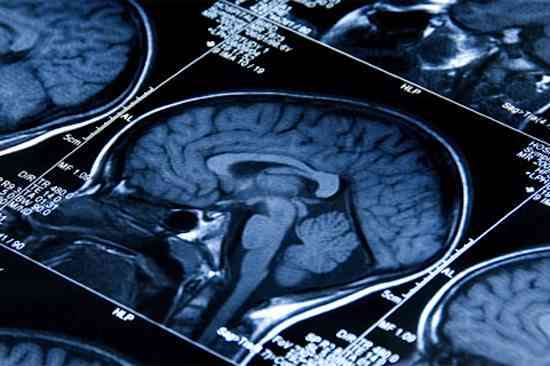This Man is Designing an App That Can Detect Toxins in Drinking Water
With a simple, but accurate user-friendly design, this app has the potential to save millions of lives by identifying fluoride and salinity in water.

After her brain cancer became resistant to chemotherapy and then to targeted treatments, 26-year-old Lisa Rosendahl's doctors gave her only a few months to live.
But now, a new drug combination has stabilized Rosendahl's disease and increased both the quantity and quality of her life.
By adding anti-malaria drug chloroquine to her treatment, the combination stopped an essential process that Rosendahl's cancer cells had been using to resist therapy, re-sensitizing her cancer to the targeted treatment that had previously stopped working. Along with Rosendahl, two other brain cancer patients were treated with the combination and both showed similar, dramatic improvement.
"Lisa is a young adult with a very strong will to live. But it was a high-risk, aggressive glioblastoma and by the time we started this work, she had already tried everything. For that population, survival rates are dismal. Miraculously, she had a response to this combination. Four weeks later, she could stand and had improved use of her arms, legs and hands," says paper first author Jean Mulcahy-Levy, investigator at the University of Colorado Cancer Center.
The science behind the innovative, off-label use of this malaria drug, chloroquine, was in large part built in the lab of Andrew Thorburn, deputy director of the CU Cancer Center, where Mulcahy-Levy worked as a postdoctoral fellow. Thorburn's lab studies a cellular process called autophagy.
From the Greek "to eat oneself," autophagy is a process of cellular recycling in which cell organelles called autophagosomes encapsulate extra or dangerous material and transport it to the cell's lysosomes for disposal.
Like tearing apart a Lego kit, autophagy breaks down unneeded cellular components into building blocks of energy or proteins for use in surviving times of low energy or staying safe from poisons and pathogens (among other uses). Unfortunately, some cancers use autophagy to keep themselves safe from treatments.
"My initial lab studies were kind of disappointing. It didn't look like there was much effect of autophagy inhibition on pediatric brain tumors. But then we found that it wasn't no effect across the board – there were subsets of tumors in which inhibition was highly effective," Mulcahy-Levy says.
At that point, one promising strategy is to predict and/or test for new genetic dependencies and then treat any new dependency with another targeted therapy. However, some cancers develop multiple resistance mechanisms and others evolve so quickly that it can be difficult to stay ahead of these changes with the correct, next targeted treatment.
"In September 2015, the previous targeted drugs weren't working anymore," says Greg Rosendahl. "Doctors gave Lisa less than 12 months to live. We took all our cousins up to Alaska for a final trip kind of thing. Then they came up with this new combination including chloroquine."
"My cancer got smaller, which is awesome for me," Lisa says.
"We have treated three patients with the combination and all three have had a clinical benefit. It's really exciting – sometimes you don't see that kind of response with an experimental treatment. In addition to Lisa, another patient was on the combination two-and-a-half years. She's in college, excelling, and growing into a wonderful young adult, which wouldn't have happened if we hadn't put her on this combination," Mulcahy-Levy says.
Lisa recently bought a new wheelchair so that she could spend more time at the mall. She also applied for a handicap sticker to make it easier for her to visit a nearby park with food trucks. "She wants to get out and do more. She continues to have what she feels is a good quality of life," Mulcahy-Levy says.
As Mulcahy-Levy's early studies show, many cancers do not depend on autophagy. But at the same time, many do. Because a safe and simple drug already exists to inhibit autophagy, the time between discovering an autophagy-dependent cancer and the ability to add autophagy-inhibiting chloroquine to a treatment regimen against this cancer may be short.
"I really like being able to really tailor therapy to the patient," Mulcahy-Levy says. "I like saying, ‘I think this is going to be really important to you,' and not necessarily using the same treatment with another patient whose cancer is driven by different genetic alterations. This is the definition of patient-centered care – designing therapy based on that individual patient's information. It's not just glioblastoma, but a certain mutation and not just the mutation but a certain pattern of previous treatments and resistance."
"It makes me feel really lucky to be a pioneer in this treatment," says Lisa Rosendahl. "I hope it helps and I hope it helps people down the road. I want it to help."
(Source: University of Colorado Cancer Center)
Grow Some Positivity: Click To Share – Photo by CU Tufts
Be the first to comment